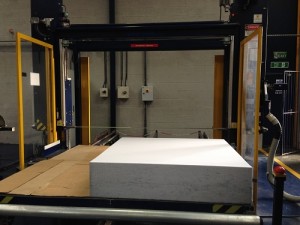Welcome to the ultimate guide on foam conversion, a versatile process with applications across various industries. In this comprehensive article, we will delve into the intricacies of foam conversion, explore its uses, and understand how this process adds value to different sectors.

Foam Conversion: What Is It?
Foam conversion refers to the transformation of raw foam materials into finished products by various manufacturing processes. These processes can include cutting, molding, laminating, and shaping, among others. Foam conversion plays a crucial role in industries such as packaging, automotive, aerospace, medical, and furniture, enabling the production of a wide range of products.
The Process of Foam Conversion
The foam conversion process involves several steps that culminate in the creation of specialized foam products tailored to specific applications. Let’s take a closer look at the key stages of foam conversion:
1. Foam Selection and Preparation
The first step in foam conversion is selecting the appropriate type of foam for the intended application. Different foam materials, such as polyurethane, polyethylene, and polystyrene, offer distinct properties suitable for various purposes. Once the foam is chosen, it undergoes preparation, which may involve cutting the foam blocks to the required size for further processing.
2. Foam Cutting
Foam cutting is a crucial process in foam conversion that determines the shape and dimensions of the final product. There are various Foam Conversion cutting methods, including hot wire cutting, waterjet cutting, and die-cutting, each offering unique advantages based on the foam type and complexity of the design.
3. Foam Molding
Foam molding allows for the creation of intricate and custom shapes by utilizing molds. This process is particularly valuable in industries like automotive, where foam parts need to fit precisely within a specific space.
4. Foam Laminating
Laminating involves bonding multiple layers of foam together or combining foam with other materials to enhance its properties. This process adds strength, durability, and other desirable characteristics to the foam product.
5. Foam Shaping and Profiling
In certain applications, foam needs to be shaped and profiled to meet specific requirements. CNC machining is often employed for precise shaping, ensuring the foam conforms precisely to the intended design.
6. Surface Finishing
Surface finishing is the final touch to the foam product, providing aesthetic appeal and protecting the foam from external factors. Techniques like adhesive coating, painting, and texturing are employed to achieve the desired surface properties.
Can foam conversion be used for eco-friendly products?
Yes, foam conversion offers eco-friendly options by using recycled foam materials or biodegradable foams, supporting sustainable manufacturing practices.
What are the major challenges in foam conversion?
One of the main challenges is achieving precision cuts and shapes during foam conversion, as foam materials can be delicate and require careful handling.
Is foam conversion cost-effective compared to other materials?
Yes, foam conversion often provides cost-effective solutions, especially for large-scale production, making it a popular choice for various industries.
How does foam conversion contribute to product customization?
Foam conversion allows manufacturers to create products with precise specifications, tailor-made to meet the specific needs and preferences of customers.
Conclusion
Foam conversion is a remarkable process that has transformed industries by providing lightweight, versatile, and cost-effective solutions. From packaging to construction and automotive applications, foam conversion continues to shape modern manufacturing. Understanding the basics of foam conversion, its advantages, and its applications can help businesses and consumers make informed decisions while choosing foam-based products.
Remember, foam conversion offers endless possibilities, and with continued advancements in technology and sustainable practices, we can expect even more innovative foam products in the future.